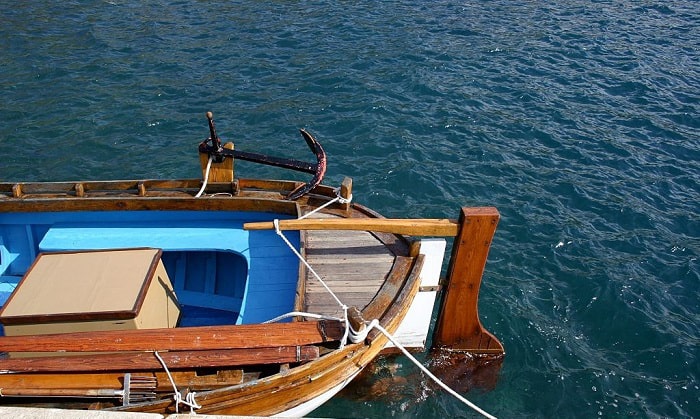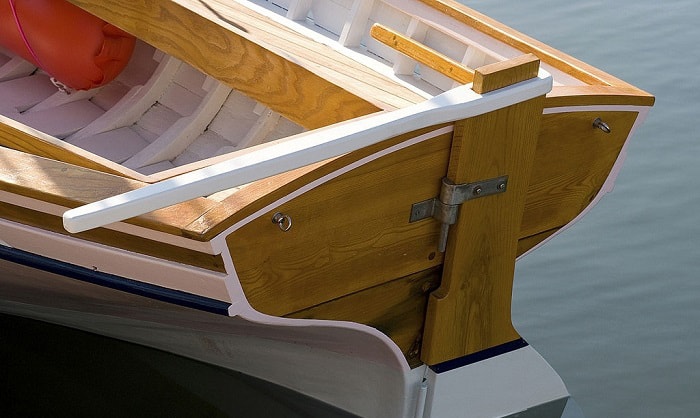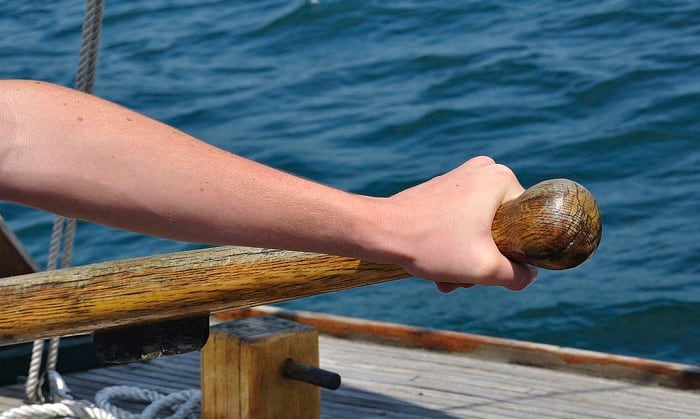Getting to know your boat is very important since being able to respond to different situations requires knowing your way around the boat. However, there can be some confusion over certain parts of the boat. In this short article, we’ll take a look at rudder vs tiller.
Since both the rudder and tiller are important for controlling the boat, let’s see what each does and how they contribute to the boat’s operation.
Keep reading to learn more.
Table of Contents
What Is a Rudder
The rudder is used to steer the direction of the boat’s movement. It is a flat object made of wood or metal and is placed vertically at the rear side of the boat, usually attached to the stern under the water or to the transom. On boats with motors, it is placed behind the propeller for maximum performance.
There are varying designs for rudders, and different designs can bring about a difference in performance. Some contribute to better control and handling, while other designs contribute to other aspects of boat performance such as speed. Some boats have more than one rudder.
What Is a Tiller on a Boat?
A tiller is a lever at the boat’s stern, which is used for steering the boat. In its simplest design, it is a long piece of wood or metal connected to a shaft. A rudder is connected to the other end of this shaft under the water. This design is often found in smaller boats such as fishing boats and is especially well-suited for trolling.
These days, it is less common to find large modern boats that still use a tiller, but replicas of old wooden ships often still have them. They were commonly used in the past due to the degree of control that tillers afford.
For tillers found in bigger boats, a long piece of wood, metal or other durable materials is attached to a simple machine that is connected to the boat’s rudder under the water. Rudders mounted on the transom of the boat itself may be connected to the tiller directly.
Tillers work similarly in smaller and bigger boats despite the difference in appearance.
Characteristics of Tiller Steering
The use of a tiller is an alternative to the wheel, which is the standard for boats these days. For smaller boats, however, it’s still common for tillers to be used due to the benefits they bring.
Tillers offer a much higher degree of control compared to the wheel. When steering the boat using a tiller, the change in direction comes much faster due to the direct shifting of the rudder via the shaft. This is especially useful when placing the boat in specific spots, as usually required in fishing.
Tillers are also more accurate compared to wheels at slower speeds. Trolling motors are almost always used along with a tiller due to this advantage. Using a tiller instead of a wheel also affords more storage space on a boat, which is another advantage for fishing.
While they are especially popular for fishing, tillers are not without flaws. Controlling a tiller at high speeds is difficult, especially when the boat is big.
Due to the demand for faster boats, the wheel, with its better control and handling at higher speeds, became standard for boats. However, tillers are still useful in specific situations, and they will probably still be used for a long time because of this.
1. Tiller Pros
- Better control and more accurate handling, especially for slower speeds
- Faster steering response due to direct attachment to the rudder
- Allows more space for storage compared to wheels
2. Tiller Cons
- Difficult to turn the boat using a tiller at higher speeds
How Rudders Work
Rudders work by intercepting the flow of water. When kept parallel, it doesn’t really affect the boat. Adjusting the rudder towards one side causes the direction of the boat to shift.
Once the rudder is turned at an angle, water pressure builds on the side of the smaller angle and the stern is pushed toward the other side which has lower pressure. As the stern shifts to one direction, the bow is pushed to the opposite direction, which then allows the boat to turn left or right.
Conclusion
After reading this short article, tiller vs rudder should no longer be a point of confusion. These actually work in conjunction with one another in delivering the necessary control in specific boating situations.
If you know anyone else having trouble with differentiating rudder vs tiller, please share this article with them as well. Also, please leave your comments below as we would love to know your thoughts.
Remember to boat safely.

“My intention from the first day establishing Boating Basics Online is to provide as much help as possible for boaters who want to experience a first safe and convenient trip. So feel free to join us and share your beautiful journeys to the sea!”



